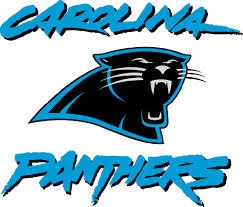The Bible overflows with prophecies, types, and symbols, which shed tremendous light into the mysteries of Scripture, but also, at times, leave us scratching our heads. Prophecy, in particular, seems to create bewilderment in a vast majority of us. I will not be unwinding the perplexity of prophecy today. My purpose for even addressing it is that prophecy–along with types and symbols–are sort of like game board pieces for our journey through The Red Thread of Jesus.
 One of my favorite games has been Trivial Pursuit. Everyone starts with an empty “pie,” but along the way, as you answer questions correctly, you pick up another piece for your pie. Eventually, when your pie is full, you race to the center of the board. (Of course the piece is just a likeness of a pie, not the real thing, but wouldn’t it be awesome if it was a real pie.)
One of my favorite games has been Trivial Pursuit. Everyone starts with an empty “pie,” but along the way, as you answer questions correctly, you pick up another piece for your pie. Eventually, when your pie is full, you race to the center of the board. (Of course the piece is just a likeness of a pie, not the real thing, but wouldn’t it be awesome if it was a real pie.)
Similarly, as we travel along through the Old Testament, we pick up likenesses of Christ. By the time we reach the center of the Bible, we’ll have a full enough picture of the coming Christ that He’s easily recognizable in the New Testament as the real Messiah.
Now to the task at hand:
Prophecies, Types, & Symbols! What are they?
(My purpose and hope for this study of The Red Thread of Jesus is not to give you a doctorate thesis-worthy explanation of prophecies, types and symbols, but rather that as we pick up these game pieces, you’ll discover just enough of the marvelous mystery of Christ in the Old Testament to awaken within you an eagerness—even a passion—for God and His Word.)
PROPHECY, in its simplest form, is basically two things: forth-telling and fore-telling.
In the Bible, we see forth-telling when God gave specific individuals His Word to speak forth to certain people.
Usually it was a warning concerning their behavior, which typically came after they began worshipping idols. However, In the curious case of Baalam, who was hired by King Balak to curse Israel, God told Baalam to speak His Word of blessing–not warning–on Israel.
(There’s also a direct prophecy of Christ buried in there. It’s a fascinating story! Talking donkeys and all! You should read it: Numbers 22-24.)
We see fore-telling when God gave specific individuals His Word to speak concerning coming events, whether they were imminent (Jonah—“in 40 days…”) or far into the future (Zechariah—”Behold, a day is coming for the Lord…”)
There’s much more to prophecy than that, but for our purposes, what we need to understand is that:
- true prophecy originates from God (Deuteronomy 18:22),
- it is His Word given for a specific purpose (Amos 3:3-8), and
- it never fails. (I Samuel 3:19)
A Type is also called a pattern in the New Testament. (Romans 5:14) When we see a type in the Old Testament, we’re seeing the “type” of work, character, event, etc. that is actually going to appear in the New Testament. It’s like a photograph of the real thing to come. The real thing is called the antitype.
It’s easier to understand if we see the word’s origin. The word type comes from the Greek noun τύπος (typos, pron. “teepos”), which means “a blow, hitting, stamp.” The word “anti” means “corresponding.” (Yes, we’re more familiar with its other meaning, which is “against,” but when used with the root word type, it takes on the meaning of corresponding.) Therefore, antitype means the object which corresponds to the stamp.
To put it into familiar terms, imagine that a type and its antitype is a cookie cutter and a cookie. The type is our cookie cutter, showing what type of cookie we’re going to have after we stamp it into the cookie dough. The antitype is the cookie. The cookie cutter stamps its image into the cookie dough giving us the real thing–the antitype–no longer just the image of what is to come. We now have the real thing.
For you fellow sports fans, a mascot could be considered a sort of type—without the Biblical truth. (Although, some might say I’m religious about football, particularly college, Go Tigers! Trust me, I’ve learned a lot of Biblical truths over the years from being a college football fan, but that’s another post for another day.)
 I’m also a Carolina Panthers fan, and our mascot is a panther—shocker, I know—representing the fierceness and speed of our team. This brings up an important point—a biblical type is not an exact replica. It usually has substantially more differences than similarities to its antitype. While some of the Carolina Panthers may have long hair, not one of them has a long tail, sharp claws, or runs on all fours.
I’m also a Carolina Panthers fan, and our mascot is a panther—shocker, I know—representing the fierceness and speed of our team. This brings up an important point—a biblical type is not an exact replica. It usually has substantially more differences than similarities to its antitype. While some of the Carolina Panthers may have long hair, not one of them has a long tail, sharp claws, or runs on all fours.
Noah’s ark is a Type of Christ because it shows the type of salvation work Christ (the antitype) would do. Noah’s ark offered salvation to Noah and his family from the flood. Jesus Christ offers salvation from sin.
Adam is a Type of Christ not because he’s Christlike, but because “through one man sin entered into the world” (Romans 5:12) and “by the grace of the one Man, Jesus Christ” (Romans 5:15) the penalty for sin was paid.
“So also it is written, ‘The first man, Adam, became a living soul.’
The last Adam [Christ] became a life-giving spirit.”
~ I Corinthians 15:45 [brackets mine]
A symbol is a person, place, thing, event, story, etc. that represents a character, quality, role, etc. Within this category, I place foreshadows, similes, metaphors, and parables.
In the Old Testament days, God commanded the Jews to follow certain laws and faithfully celebrate festivals of the Lord, many of which gave a picture of the gospel of Christ. However, in the New Testament we see that Christ fulfilled those pictures, and they no longer needed to look to the foreshadows, but rather to the reality—Christ.
“Therefore no one is to act as your judge in regard to food or drink or in respect to a festival or a new moon or a Sabbath day—things which are a mere shadow of what is to come; but the substance belongs to Christ.”
~ Colossians 2:16-17
 With our game board now set, we’re ready to step onto the board–Genesis 1:1, to be exact–and begin our journey through the Old Testament, picking up likenessesof Christ–or as I like to call them, Red Thread Clues–as we search for The Red Thread of Jesus.
With our game board now set, we’re ready to step onto the board–Genesis 1:1, to be exact–and begin our journey through the Old Testament, picking up likenessesof Christ–or as I like to call them, Red Thread Clues–as we search for The Red Thread of Jesus.
Join the Journey!
If you liked this post, you may enjoy the others posts in The Red Thread of Jesus series. Click on the link, and then scroll to the bottom for the first post in the series.







This is really good Jean!! I shared your post on my Facebook and my sister-in-law wishes she was here to come to your study! (but shes in MD) but these post are good!!
Thanks so much!! I’m so thankful to be able to do this study. It’s exciting and transforming to see Christ from Genesis 1:1 to Revelation 22:21! I’m going to keep posting from the study, so your sister-in-law can join us from her living room in MD. 🙂